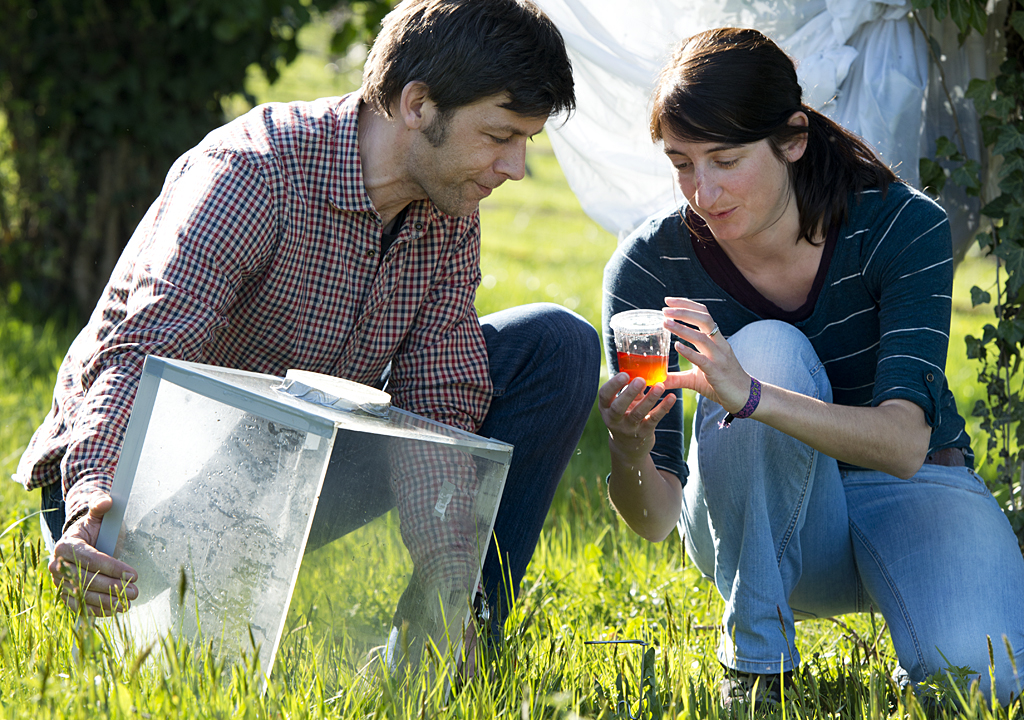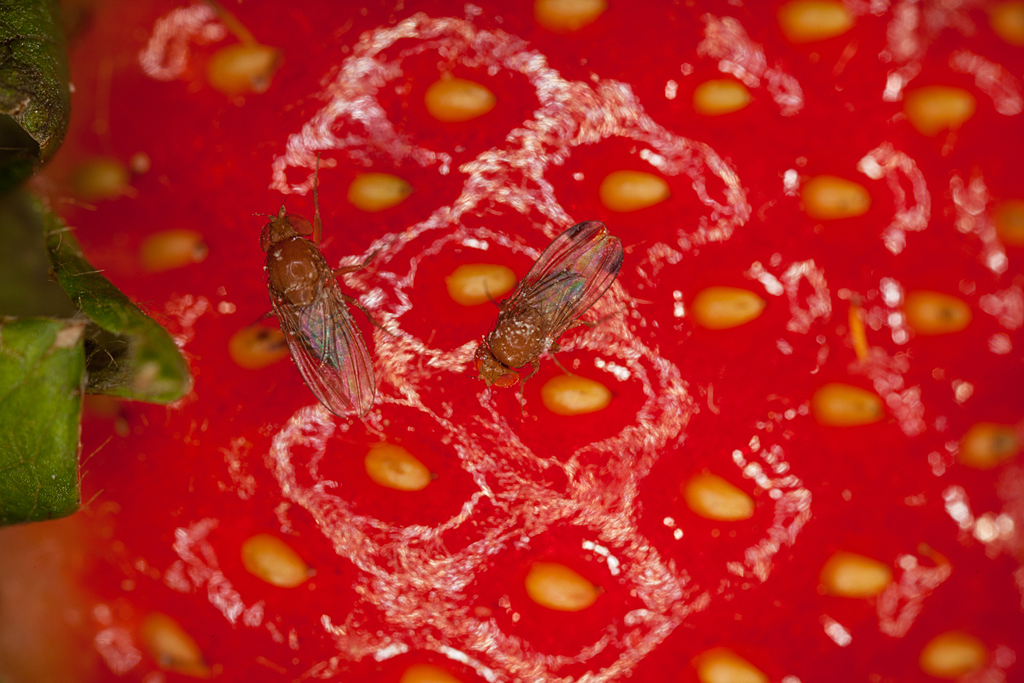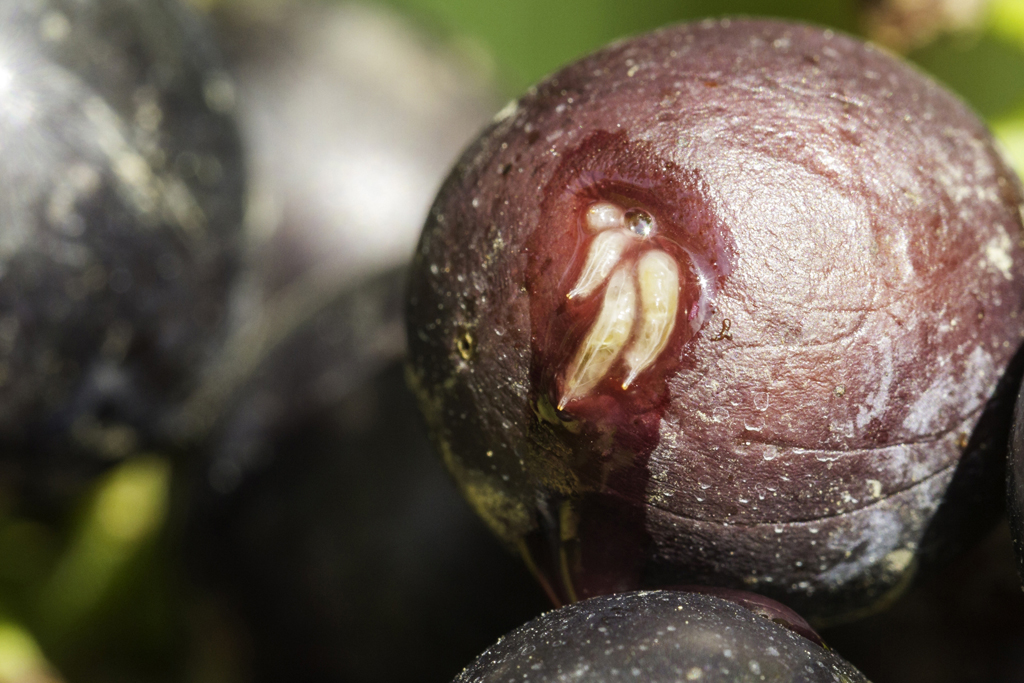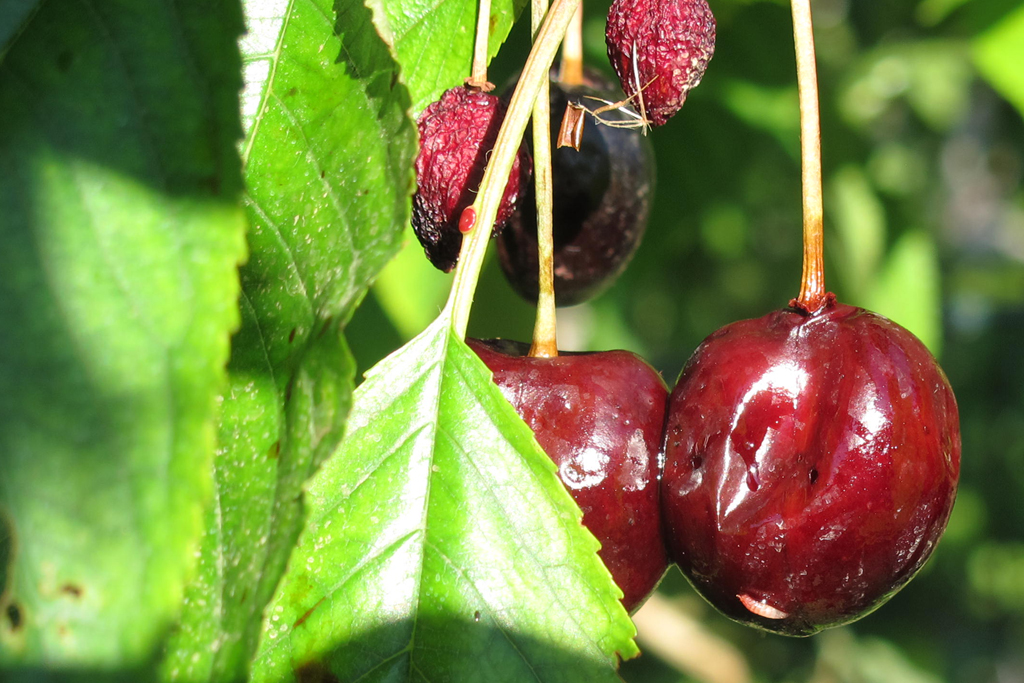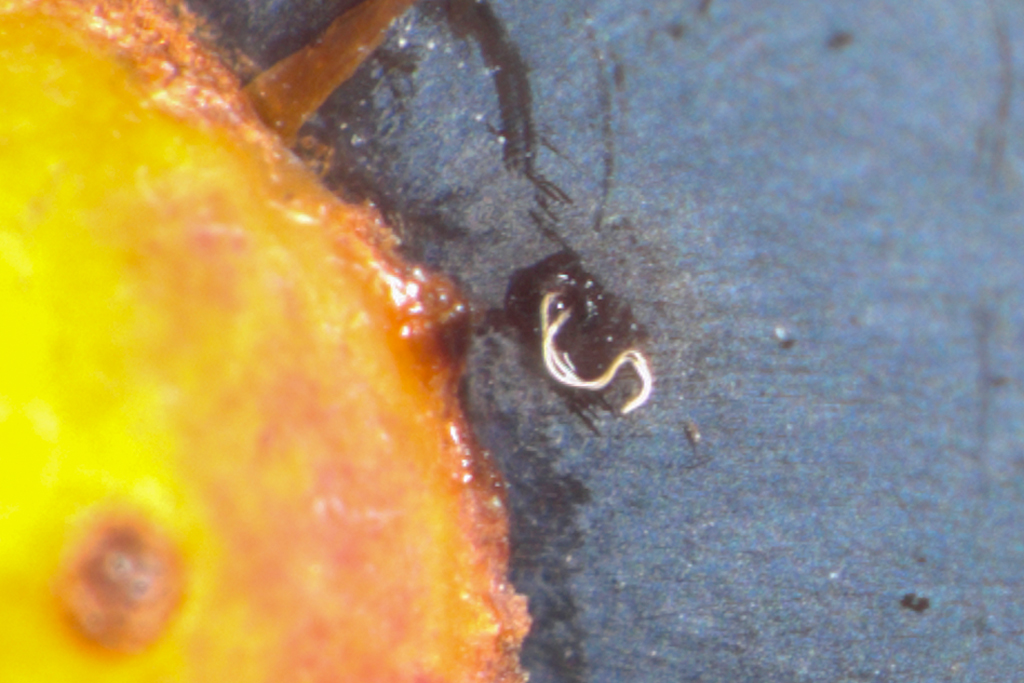Just three millimetres long, but scarcely a fruit is safe from it: the maggots of the spotted-wing drosophila Drosophila suzukii have an appetite for berries, stone fruit and even grapes. In 2014, this tiny fly caused major economic losses in Switzerland in some instances, attacking cherries, apricots, plums, damsons and grapes for the first time, in addition to various berry crops.
Favourable weather conditions were the reason for the mass propagation of the spotted-wing drosophila in 2014. Months of warm, damp weather on the heels of a mild winter made this pest introduced from Asia feel right at home – the reason why Agroscope experts captured around ten times more flies in the monitoring traps than they had in previous years.
Stone fruit: more damage than ever before
The early onset of spring in 2014 provided the flies with ideal breeding conditions, allowing them to propagate at breakneck speed in early cherry varieties. A growing population needed even more fruit in which to lay eggs, so infestation pressure rose steadily over the course of the season. Consequently, late-ripening cherry varieties and damsons failed completely in individual instances. Peaches, apricots and numerous wild fruit species were infested in addition to cherries and damsons. High-stem orchards, meadow orchards and direct-marketing farms were the hardest hit.
Berries: Agroscope strategy makes an impact
Berries are the crop most at risk. Because of the previous year’s losses, most berry producers had been forewarned, and had implemented the Agroscope plant-protection strategy, so damage to berries in 2014 was kept within limits. Substantial crop losses only occurred when the recommended measures were not implemented, or were implemented too late.
Grapes: sour rot or flies?
The wet summer not only encouraged the spotted-wing drosophila, but also fungal diseases and the bursting of individual grapes. Such circumstances promoted sour rot such as had not been seen in years. All in all, this disease destroyed up to 10% of the Swiss vintage in 2014. With hindsight, the fly was wrongly suspected of part of the damage.
Making a start
Knowledge on the biology and distribution of this pest is essential for mounting an effective control strategy. Together with the cantons, Agroscope has been implementing a nationwide monitoring programme with traps since 2011. All research and extension activities are implemented across all crops and throughout Switzerland, as well as in active exchange with other experts. In addition, producers have been brought on board to refine the monitoring and control strategy.
Strategy search on all levels
Unfortunately, 2014 showed that under high infestation pressure, it is difficult to protect at-risk crops from the spotted-wing drosophila. For this reason, Agroscope has set up a task force together with the FiBL (Research Institute of Organic Agriculture) whose aim is to develop new approaches to control in stone-fruit, berry growing and viticulture with all players from practice, commerce, extension, enforcement and research. Agroscope tests the efficacy of preventive measures as well as the protective effect of nets and other artificial barriers. Slaked lime and other rock powders are tested, since it is presumed that these products reduce oviposition. In addition, mass trapping is being further optimised in berry growing and tests are conducted to determine whether this technique might also be useful for stone fruit and grapes. Agroscope is also testing the effectiveness of ‘attract & kill’, which specifically induce pests to ingest insecticides by means of food baits. In the long term, however, Agroscope would also like to increase the influence of natural antagonists such as small parasitic wasps. All of this is meant to help improve current control strategies and discover new and more sustainable ways of working with practitioners to curb the spotted-wing drosophila’s appetite for fruit.


